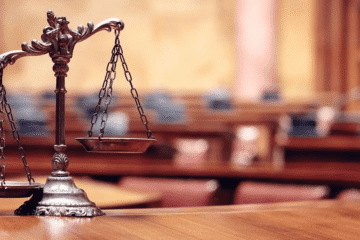
This Article is Written by Piyush Kumar Das of Delhi Metropolitan Education affiliated to Guru Gobind Singh Indraprastha University, an intern under Legal Vidhiya
ABSTRACT
Public Interest Litigation (PIL) has evolved into a cornerstone of constitutional justice in India, empowering courts to address structural injustices that often escape traditional legal remedies. Initially conceived as a judicial innovation to provide access to justice for the disadvantaged, PIL has matured into a powerful mechanism to uphold fundamental rights, enforce socio-economic entitlements, and ensure administrative accountability. Over time, PIL has expanded its reach—from prisons to pavement dwellers, from bonded laborers to climate change victims. Advocates play a pivotal role in this evolution, acting not merely as legal representatives but as catalysts of social transformation. Their ability to translate public concerns into constitutional claims, mobilize legal frameworks, and creatively litigate complex policy issues will determine the future trajectory of PIL. This article critically analyzes the historical development, present challenges, and future prospects of PIL, while emphasizing the evolving role of advocates as the guardians of constitutional conscience and agents of democratic deepening.
KEYWORDS
Public Interest Litigation, advocates, constitutional rights, legal reform, access to justice, judicial activism, fundamental rights, socio-economic justice, environmental law, privacy
REIMAGINING STANDING CONSTITUTIONAL ORIGINS AND THE DOCTRINAL BREAKTHROUGH OF PIL
Public Interest Litigation in India developed not through statutory fiat but through judicial reimagination of the constitutional guarantee to constitutional remedies. Article 32 of the Constitution grants individuals the right to move the Supreme Court for enforcement of fundamental rights, a right termed by Dr. B.R. Ambedkar as the “heart and soul” of the Constitution. Traditionally, this was interpreted narrowly, limiting standing to directly aggrieved persons. However, the Indian judiciary radically transformed this doctrine beginning in the late 1970s and early 1980s to allow for third-party litigation in cases where the victims themselves could not access justice.
This transition was formally crystallized in S.P. Gupta v. Union of India, where Justice P.N. Bhagwati held that “any member of the public acting bona fide and having sufficient interest can maintain an action for redressal of public wrong”[1]. The departure from the traditional Anglo-American doctrine of locus standi was justified on grounds that socio-economic inequalities and illiteracy made it impossible for marginalized individuals to approach the courts directly. This expansion of standing was reaffirmed in subsequent cases like People’s Union for Democratic Rights v. Union of India, where the Supreme Court treated even letters from concerned citizens as writ petitions[2].
What is most striking about the doctrinal innovation in PIL is that it was not merely a procedural modification but a substantive constitutional development. By relaxing procedural thresholds, the courts simultaneously expanded the substantive reach of fundamental rights to include socio-economic entitlements, labor rights, environmental concerns, and the rights of prisoners, children, and minorities. This aligns with the philosophy of Part IV of the Constitution—Directive Principles of State Policy—which, although non-justiciable, were judicially enforced through PIL to bridge the gap between law and justice[3].
CURRENT LANDSCAPE INSTITUTIONAL LEGITIMACY, MISUSE, AND THE QUEST FOR BALANCE
While PIL has led to momentous reforms—including the abolition of child labour, recognition of sexual harassment as a constitutional violation, and protection of forests and rivers—it has not been without controversy. The exponential growth of PILs since the 1990s has led to judicial concerns about their misuse. In Ashok Kumar Pandey v. State of West Bengal, the Supreme Court noted the dangers of PILs being filed for extraneous purposes, including political vendettas or personal publicity[4]. Similarly, in State of Uttaranchal v. Balwant Singh Chaufal, the Court emphasized the necessity of filtering frivolous petitions and laid down guidelines to discourage “publicity interest” litigations[5].
There are also institutional concerns. PIL proceedings consume considerable judicial time and resources. In many cases, they involve complex policy issues that may lack clear legal parameters for adjudication. As a result, PILs can blur the lines between judicial review and judicial governance, potentially eroding the doctrine of separation of powers. This has triggered accusations of judicial overreach, particularly in cases like Centre for Public Interest Litigation v. Union of India, where the Court cancelled 2G licenses in a high-profile corruption case, raising questions about judicial interference in economic policy[6].
However, PIL has also been a tool of accountability in these very arenas. In Vineet Narain v. Union of India, the judiciary institutionalized mechanisms for investigating high-level corruption, thereby reinforcing transparency[7]. Thus, the contemporary PIL landscape is marked by a tension between its enormous potential for good and its susceptibility to abuse.
THE ADVOCATE AS A SOCIAL ARCHITECT EXPANDING ROLES AND RESPONSIBILITIES
Advocates have always been central to the emergence and sustenance of PIL. The history of Indian PIL is in many ways the history of the pioneering efforts of public-spirited lawyers like M.C. Mehta, who filed over 30 PILs on environmental issues, including the landmark Oleum Gas Leak case that established the principle of absolute liability for hazardous industries[8]. Similarly, Vishaka v. State of Rajasthan, which laid the foundation for workplace sexual harassment laws, was the result of tireless advocacy by lawyers committed to gender justice[9].
Advocates engaged in PIL operate in a hybrid capacity: they are legal professionals, social mobilizers, policy critics, and constitutional custodians. This unique positioning requires a broader skill set—understanding not only legal doctrine but also administrative procedures, governance structures, and social science research. In PIL litigation, facts often matter more than legal arguments, especially in rights-based claims involving marginal communities. Advocates thus often undertake or coordinate empirical research, community engagement, and media campaigns to supplement their legal efforts.
Moreover, the role of the advocate in PIL extends beyond the courtroom. Lawyers often act as bridge-builders between NGOs, civil society organizations, and policymakers. Their strategic interventions can shape national agendas, as evidenced by PILs addressing climate change, urban homelessness, and the digital divide. The future of PIL will demand a new generation of advocates who are not just trained in black-letter law but equipped to navigate interdisciplinary terrains.
ANTICIPATING THE FUTURE THEMATIC EXPANSION AND INSTITUTIONAL INNOVATIONS
As India advances in technological development and faces newer socio-economic challenges, the future of PIL will revolve around complex areas such as data governance, environmental justice, algorithmic discrimination, and transnational corporate accountability. One key frontier is digital rights. The Justice K.S. Puttaswamy v. Union of India case, which recognized the right to privacy as a fundamental right, was a PIL that dramatically altered the trajectory of constitutional jurisprudence in the digital age[10]. Similar PILs are expected to emerge around data protection, AI regulation, and digital surveillance.
Environmental PILs will also continue to dominate the docket, but with a shift from conservation to sustainability. PILs may increasingly challenge government inaction on climate commitments, drawing upon both domestic constitutional provisions and international environmental norms. In the Tehri Dam case, the judiciary considered environmental impact assessments in light of sustainable development principles—an approach likely to be strengthened in future litigation.
There is also a growing trend towards continuing mandamus, where courts monitor executive compliance over long durations, as seen in T.N. Godavarman Thirumulpad v. Union of India[11]. This trend may lead to institutional reforms such as specialized PIL benches or independent monitoring committees to aid the judiciary.
To preserve legitimacy and effectiveness, reforms are needed. The judiciary could consider adopting a public interest vetting mechanism, possibly through an empowered registrar or a judicial panel. High Courts and the Supreme Court may establish PIL cells to scrutinize petitions before admitting them, thereby preventing frivolous or politically motivated filings. Furthermore, bar councils and law schools must promote public interest lawyering clinics, integrating legal education with real-world constitutional litigation.
CONCLUSION
TOWARDS A CONSTITUTIONAL CULTURE OF EMPATHY AND INNOVATION
Public Interest Litigation remains one of the most radical and impactful innovations in Indian constitutionalism. From its origins as a jurisprudential rebellion against procedural rigidity, it has evolved into a dynamic medium for fostering inclusive governance and social justice. Yet, its continued vitality depends on a delicate balance—between openness and discipline, activism and restraint, legalism and empathy.
Advocates are—and will remain—the custodians of this balance. As constitutional actors, their responsibility is not merely to litigate, but to elevate public discourse, mediate between communities and institutions, and reimagine justice in an ever-changing society. The future of PIL is not guaranteed by judicial benevolence or procedural access alone; it will be defined by the courage, creativity, and constitutional commitment of the advocates who dare to wield it.
REFERENCES
1. S.P. Gupta v. Union of India, AIR 1982 SC 149.
2. People’s Union for Democratic Rights v. Union of India, (1982) 3 SCC 235.
3. Constitution of India, arts. 38, 39, and 46.
4. Ashok Kumar Pandey v. State of West Bengal, (2004) 3 SCC 349.
5. State of Uttaranchal v. Balwant Singh Chaufal, (2010) 3 SCC 402.
6. Centre for Public Interest Litigation v. Union of India, (2012) 3 SCC 1.
7. Vineet Narain v. Union of India, (1998) 1 SCC 226.
8. M.C. Mehta v. Union of India (Oleum Gas Leak case), AIR 1987 SC 1086.
9. Vishaka v. State of Rajasthan, (1997) 6 SCC 241.
10. Justice K.S. Puttaswamy (Retd.) v. Union of India, (2017) 10 SCC 1.
11. T.N. Godavarman Thirumulpad v. Union of India, (1997) 2 SCC 267.
Disclaimer: The materials provided herein are intended solely for informational purposes. Accessing or using the site or the materials does not establish an attorney-client relationship. The information presented on this site is not to be construed as legal or professional advice, and it should not be relied upon for such purposes or used as a substitute for advice from a licensed attorney in your state. Additionally, the viewpoint presented by the author is personal.




0 Comments